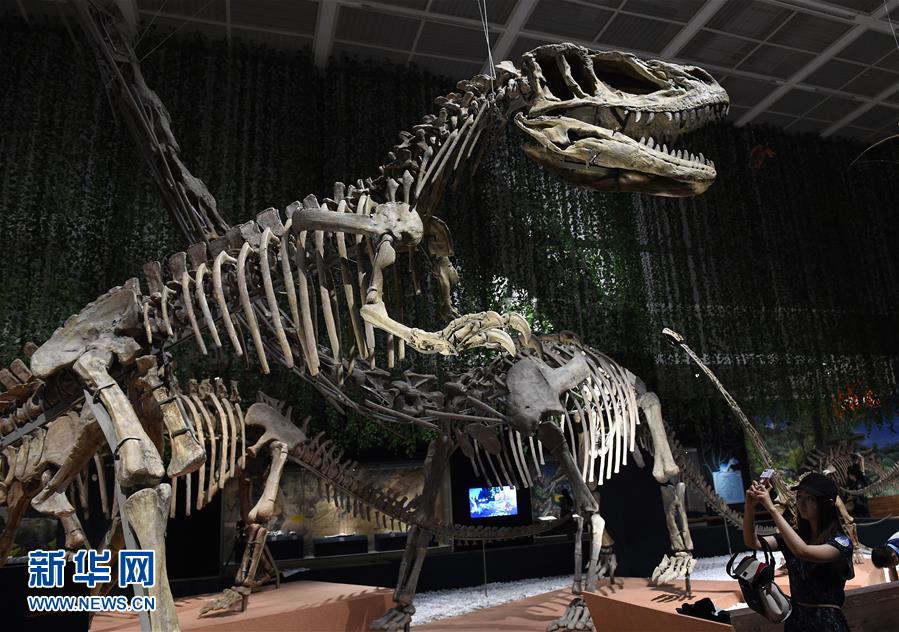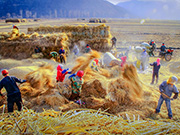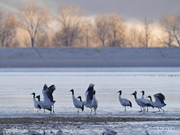


LONDON, Aug. 28 (Xinhua) -- Scientists at the University of Kent in Britain found clues to reproduce dinosaur DNA structure by working backwards from their closest modern-day relatives.
The research team led by Professor Darren Griffin used biotechnology to analyze data from lizards, chicken, turtles, and pieced together a history of DNA that dates back some 255 million years.
The findings were published in the journal Nature Communications this week, which identified that dinosaur DNA was probably organized into many chunks called chromosomes.
Like their dinosaur predecessors, birds have about 80 chromosomes -- about three times the number humans possess, which could be the reason for such diversity among birds.
"We think it generates variation. Having a lot of chromosomes enables dinosaurs to shuffle their genes around much more than other types of animals. This shuffling means that dinosaurs can evolve more quickly and so help them survive so long as the planet changed," Griffin said.
The team also speculates that the way in which DNA was organized may have "provided a blueprint for evolutionary success" because it is able to generate variation and thus facilitate natural selection, which keeps animals alive.
However, the techniques used in the research are not able to help capture ancient dinosaur DNA from fossils now, because genetic material degrades over time, and the world record for the survival of ancient DNA is 1 million years. Dinosaurs lived between 66 and 245 million years ago.
That's why Griffin can't see the research leading to any theropod-based theme parks.
"We are not going to have Jurassic Park anytime soon," Griffin told the BBC, explaining that humans can't just put the DNA of a dinosaur into a distant relative's egg and get a dinosaur out the other end.

 Award-winning photos show poverty reduction achievements in NE China's Jilin province
Award-winning photos show poverty reduction achievements in NE China's Jilin province People dance to greet advent of New Year in Ameiqituo Town, Guizhou
People dance to greet advent of New Year in Ameiqituo Town, Guizhou Fire brigade in Shanghai holds group wedding
Fire brigade in Shanghai holds group wedding Tourists enjoy ice sculptures in Datan Town, north China
Tourists enjoy ice sculptures in Datan Town, north China Sunset scenery of Dayan Pagoda in Xi'an
Sunset scenery of Dayan Pagoda in Xi'an Tourists have fun at scenic spot in Nanlong Town, NW China
Tourists have fun at scenic spot in Nanlong Town, NW China Harbin attracts tourists by making best use of ice in winter
Harbin attracts tourists by making best use of ice in winter In pics: FIS Alpine Ski Women's World Cup Slalom
In pics: FIS Alpine Ski Women's World Cup Slalom Black-necked cranes rest at reservoir in Lhunzhub County, Lhasa
Black-necked cranes rest at reservoir in Lhunzhub County, Lhasa China's FAST telescope will be available to foreign scientists in April
China's FAST telescope will be available to foreign scientists in April